The Science Of Why An Asteroid, Not A Comet, Wiped Out The Dinosaurs

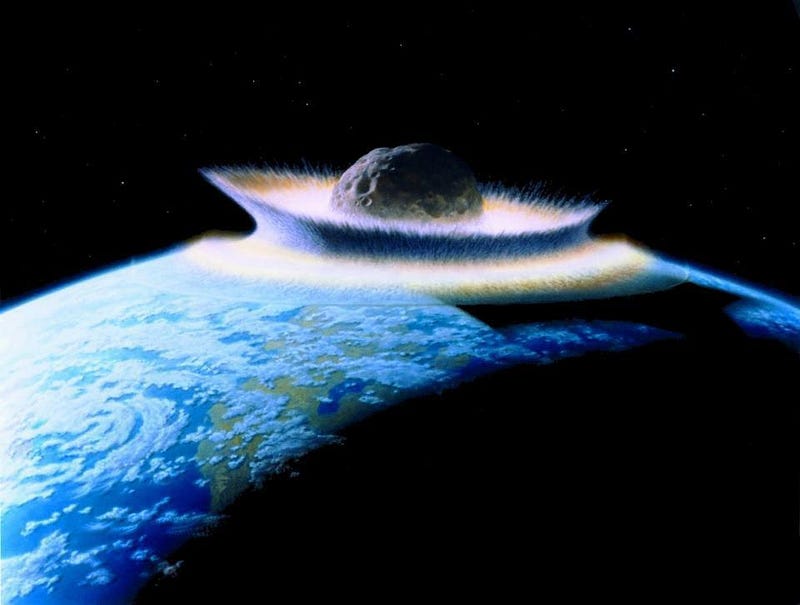
If you read, back in February, that it might have been a comet, set yourself straight.
Approximately 66 million years ago, Earth experienced what’s known as the fifth great mass extinction. Fossils that were abundant in older rock layers — embedded in Earth’s sedimentary rock all across the globe — suddenly disappeared from younger ones. A wide range of animals and plants, including all of the non-avian dinosaurs, all met their demise at almost exactly the same moment in time. In fact, approximately 75% of all plant and animal species on Earth’s land and in Earth’s oceans met with extinction at precisely the same moment.
What caused this sudden mass extinction? The big clue came in 1980, when a team led by Luis Alvarez discovered a thin clay layer between them with enormous concentrations of the element iridium: rare on Earth but common in asteroids (and certain types of comets). In 1991, Chicxulub crater was identified and linked to this event. For decades, scientists argued over whether the impactor was an asteroid or a comet, with the data overwhelmingly favoring asteroids. In February of 2021, however, Harvard Astronomer Avi Loeb, along with his student, Amir Siraj, published and promoted a highly dubious paper where they drew the opposite conclusion. Now, a superior analysis absolutely refutes their paper, and details why an asteroid, not a comet, was almost certainly responsible for wiping out the dinosaurs.
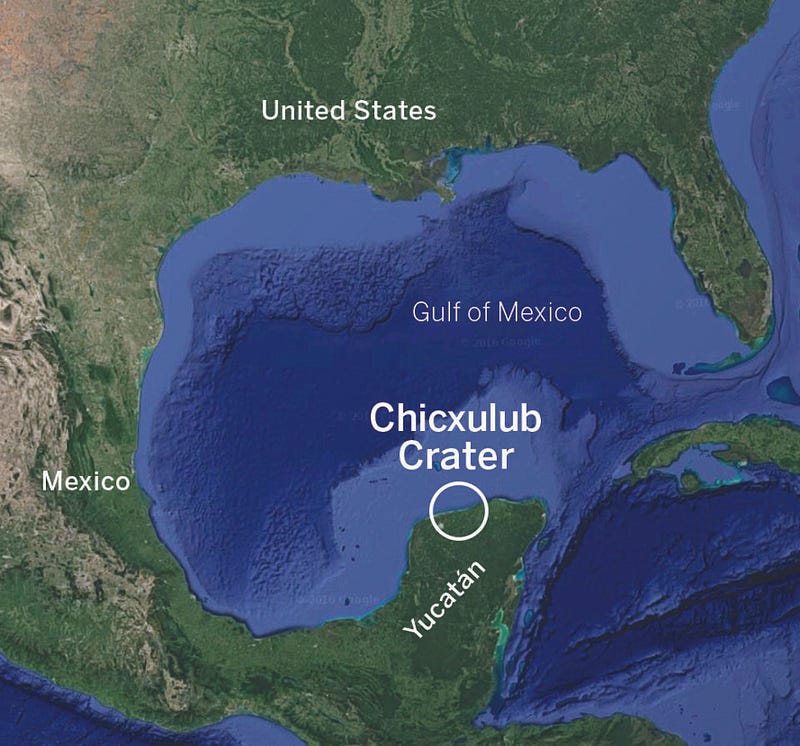
There are four main pieces of evidence that one has to account for when it comes to the mass extinction event from ~66 million years ago.
- The extinction of well over 50% of marine and land species of plants and animals all in a very short time window.
- The size, magnitude, and distribution of the layer of clay and ash found around the globe, including the abundance of the various rare elements discovered.
- The energy that must have been deposited by an impactor to cause the formation of Chicxulub crater.
- And the frequency of how often asteroids vs. comets are expected to fulfill these three earlier criteria, to help compute which one is more likely than the other.
A large impact of either a comet or asteroid could have caused this extinction. Either one, if large enough, would be capable of kicking up enormous amounts of material that changed the global climate and led to the decline and fall of many species. Because comets typically originate from farther out than asteroids do, they move at faster speeds when they cross Earth’s orbit: a comet would only need to be about ~7 kilometers in diameter to impact Earth with enough energy to create Chicxulub crater, while an asteroid would need to be a larger ~10 kilometers across.
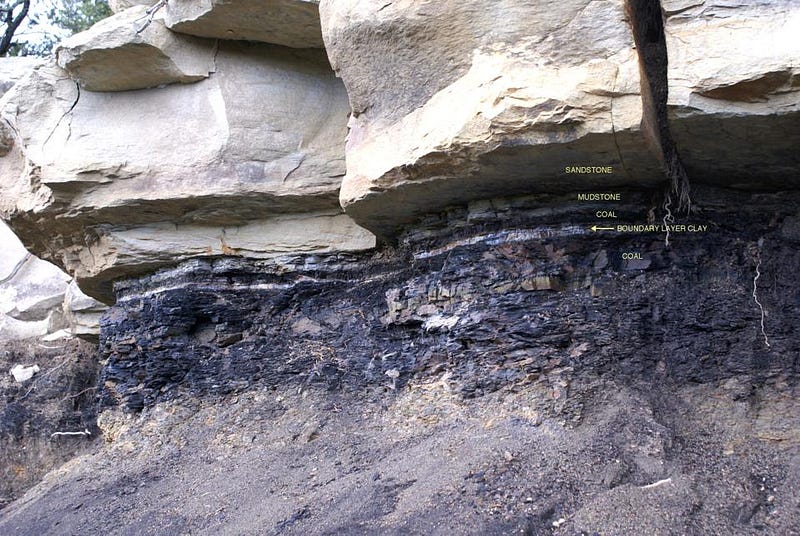
The main constraint on the extraterrestrial origin of this extinction event, as the new paper points out, has always been the composition of the clay layer at the boundary between the Cretaceous period (which ended 66 million years ago) and the Paleogene (which began 66 million years ago). That clay layer contains rare elements and rare isotopes of elements in great concentrations, as well as amino acids not used in life processes on Earth: consistent with what we find in meteorites, not in things of terrestrial origin.
Now, here’s the first big problem with the comet idea. Most of the asteroids that we’ve encountered on Earth fall into one of four groupings: chondrites (with little, spherical inclusions made largely of silicates), achondrites (without them), iron meteorites, and stony-iron meteorites. Of these, a 10 kilometer impact from a specific type of chondrite — the carbonaceous chondrites, making up about 5% of all intact meteorites — would deliver about ~230,000 tonnes of iridium, which aligns with modern estimates of between 200,000–280,000 tonnes of iridium deposited in that event.
An impact from a 7 kilometer comet, based on the comets we’ve examined, could deliver no more than ~10,000 tonnes of iridium, as it’s only about one-third the volume, made out of lighter elements overall, and mostly composed of ice.
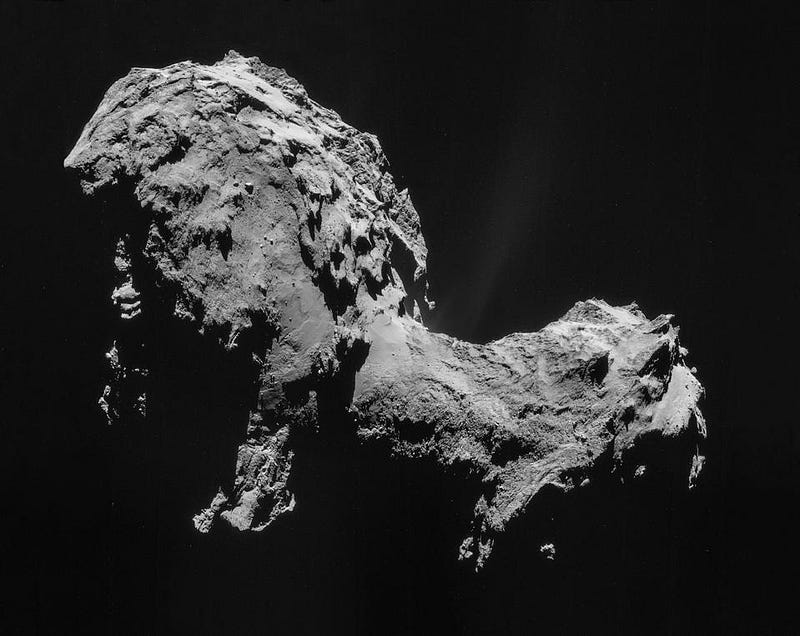
There’s also the issue of event rates. You can calculate the event rates of comet impacts versus the event rates of asteroid impacts to determine which one was more likely. Originally, in their February 2021 paper, Siraj and Loeb (correctly) stated that Chicxulub was the largest impact in the past 250 million years, and that impacts with main belt asteroids should occur with a mean interval of around ~350 million years. Based on those numbers alone — provided by Siraj and Loeb — the likelihood of a Chicxulub-scale impact event over the last 250 million years is greater than 50%. In other words, it’s difficult to support the claim that an asteroid impact would be unlikely.
However, long period comets of the appropriate (~7 km) size to produce Chicxulub crater, the other main candidate mechanism, only strike the Earth with a mean interval of around ~3800 million years, rendering the probability of a such a strike over the past 250 million years under ~7%. Larger comets could pass close by the Sun and be disrupted, fragmenting as a result, but they chose — unmotivated by any evidence — to assume that large (~60 km) comets would fragment into precisely 630 chunks, leading to an enormous enhancement of a factor of ~15. When realistic models and simulations of cometary fragmentation are used, however, the number of fragments is more likely to fall in the 10-to-30 range, which would lead to them striking Earth with a mean interval of just ~2000 million years.

The February 2021 paper by Siraj and Loeb, published in the journal Nature Scientific Reports, is rife with errors that would be considered unconscionable by most professionals in the field. First off, they make no mention of the iridium abundance in their paper, simply noting that the impactor must have had a composition like a carbonaceous chondrite. While there are carbonaceous chondrites found among both asteroids and comets, the specific sub-types of carbonaceous chondrites that fit the observed evidence from the composition of the boundary layer — either CM or CR carbonaceous chondrites — are exclusive to asteroids, and not matched by comets at all.
Second, when computing probabilities of asteroids versus comets, they performed an analysis to compute the fraction of main belt asteroids that could provide a match to the impactor: a reasonable approach, but arriving at a figure that is only about ~10% of main belt asteroids, when a fuller analysis indicates that figure is probably 20% or higher. However, they then assumed that 100% of comets could match the carbonaceous chondrite composition of the layer separating the Mesozoic from the Cenozoic eras: a double-standard that unfairly downweights the likelihood of an asteroidal nature while similarly unfairly upweighting the likelihood of cometary origins.
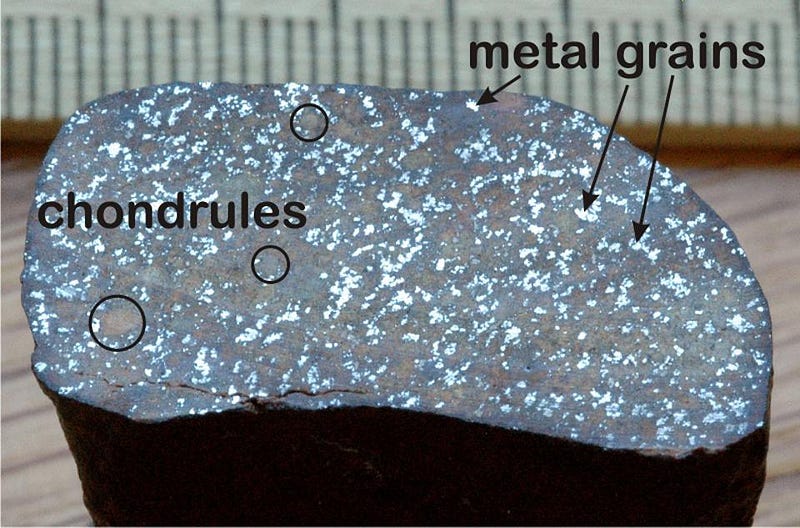
As the refutation paper notes, there are a number of important mistakes that grossly misrepresent basic known facts about our Solar System. They include the following statements:
“Siraj & Loeb only concluded that comets were approximately 10 times more likely than asteroids because they conflated carbonaceous chondrites with specific meteorite types, and ignored the [iridium] evidence.”
“Including the constraints that the impactor must match a CM or CR carbonaceous chondrite types and supply the [iridium] in the global clay layer, the probability of a comet is ≈0%.”
“Despite the importance of the number of fragments [that a comet will break into when it passes near the Sun], Siraj & Loeb did not set it as a free parameter and explore the sensitivity of their results to it or acknowledge this major uncertainty in their calculation.”
It’s very clear, upon close examination by professionals in the field, that the paper by Siraj and Loeb should never have passed peer review, as it contains a number of disqualifying flaws that could have been rectified simply by looking at the existing literature on the subject. So, one wonders, how does a paper like this not only get published, but garner an enormous amount of media attention?

Sadly, it’s almost formulaic. There’s a stereotype of what happens when a certain kind of scientist — usually a physicist — decides to take an interest in a field adjacent to or even completely outside of their own. (It’s well-illustrated by the XKCD comic shown above.)
- They consider a major issue in another field,
- think up an alternative scenario to the mainstream,
- crudely model or estimate both the mainstream process and the alternative process,
- and draw their conclusions without regard to anything they might have overlooked.
This type of science-in-a-vacuum is often an excellent exercise in how one takes an initial stab at a problem, but is a horrifically poor substitute for the decades of research that go into uncovering the deep scientific truths that can be found in any area of investigation. Unless you happen to get both editors and reviewers that are sufficiently familiar with the nuances of those particular sub-fields, this callous and careless sort of analysis can easily slip through the cracks.
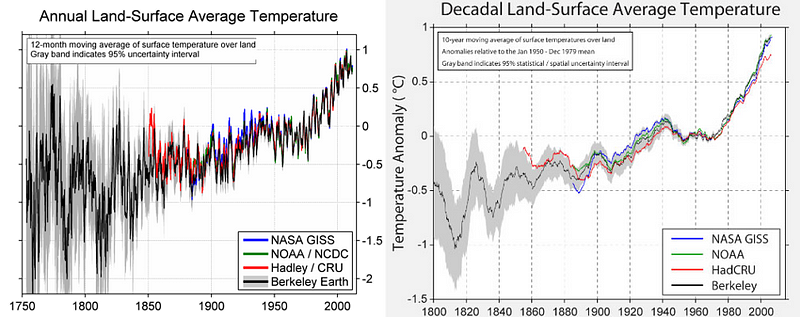
In many ways, the real catastrophe is how non-seriously a scientist can fundamentally disrespect another field to thoroughly and get away with it. When, as scientists, we begin our graduate studies, we rely on our supervisors, colleagues, and peers to teach us how to do research responsibly. What this entails, every single time you have an idea, is to learn how to take the following steps.
- Perform a literature search, which will teach you what work has already been done on this particular topic and what ideas have already been considered.
- Work through the relevant literature, learning how various factors are accounted for and dealt with.
- Learn what various issues are important to the topic, which ones are settled (and why) and which ones remain areas of contention (and why).
- Finally, when you’ve sufficiently understood the methods used, assumptions made, and relevant data and constraints that cannot be evaded, only then are you ready to fold in your idea: in the context of everything else that’s already been known.
This is how professionals within pretty much any scientific field learned to conduct themselves, how they train their students to research, and also how scientific fields advance.
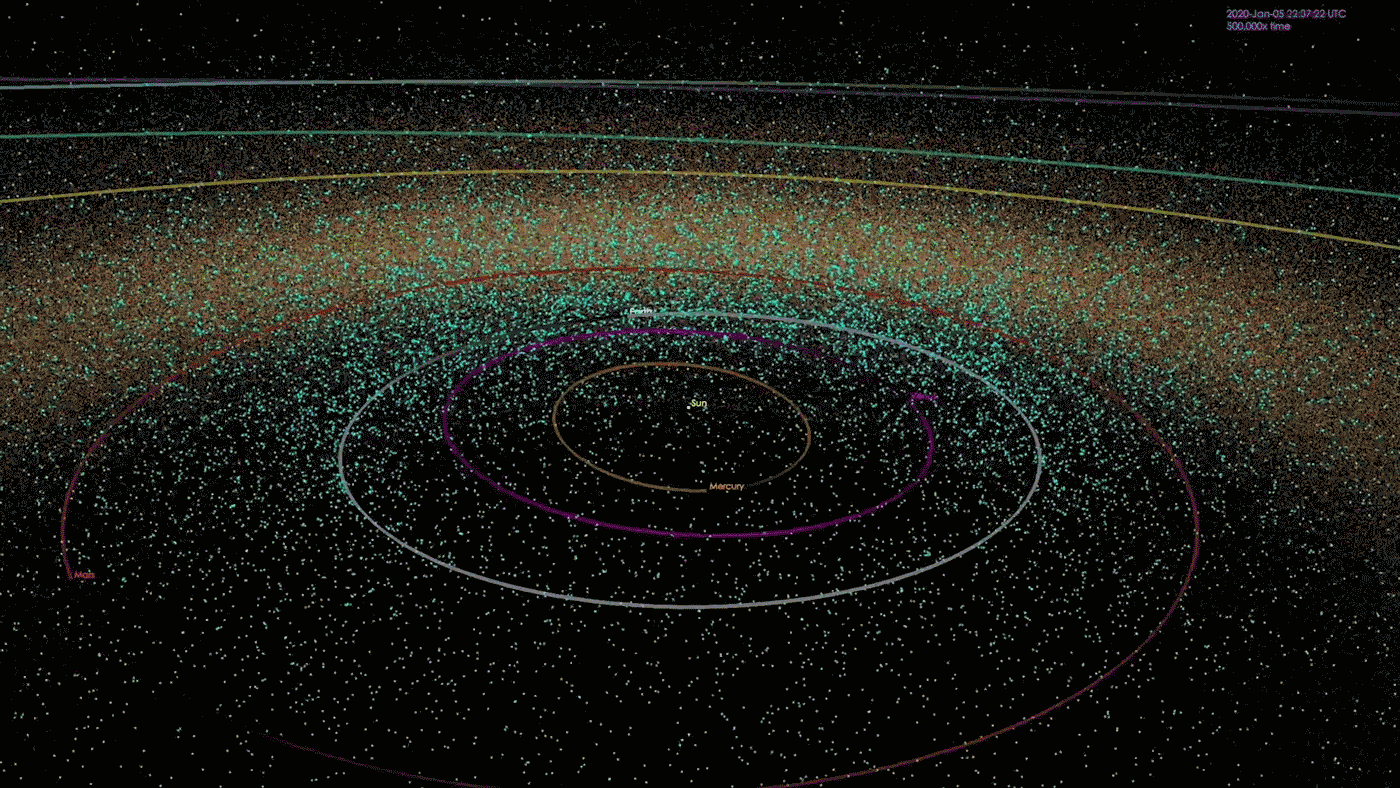
It’s very clear, from the Siraj and Loeb paper, that they only superficially performed the first step, making an enormous number of assumptions in their work that are unjustifiable. For the community of scientists who work on the K-Pg extinction event and the nature of the Chicxulub impactor, this paper — and the associated press release from Harvard and fawning coverage elsewhere — this is the most notable public-facing event that their field has received in some years, and it was about a contrarian study that engaged only in superficial, easily refuted analysis.
The iridium present in the geological layer from 66 million years ago, for example, was recently confirmed to match the chemical footprint of asteroidal dust beneath the oceanic waters in Chicxulub crater itself. The type of carbonaceous chondrite that overwhelmingly corresponds to comets is known as a CI chondrite, which is incompatible with the asteroid-based CM or CR chondrites that fit the observed amino acid, Chromium-54, fossil meteorite, and platinum-group element abundances of the clay boundary layer.
The asteroidal nature of the Chicxulub impactor is not in doubt, but unless you yourself are either a professional in the field or you happen to read this article, you’ll probably never conclude that for yourself.
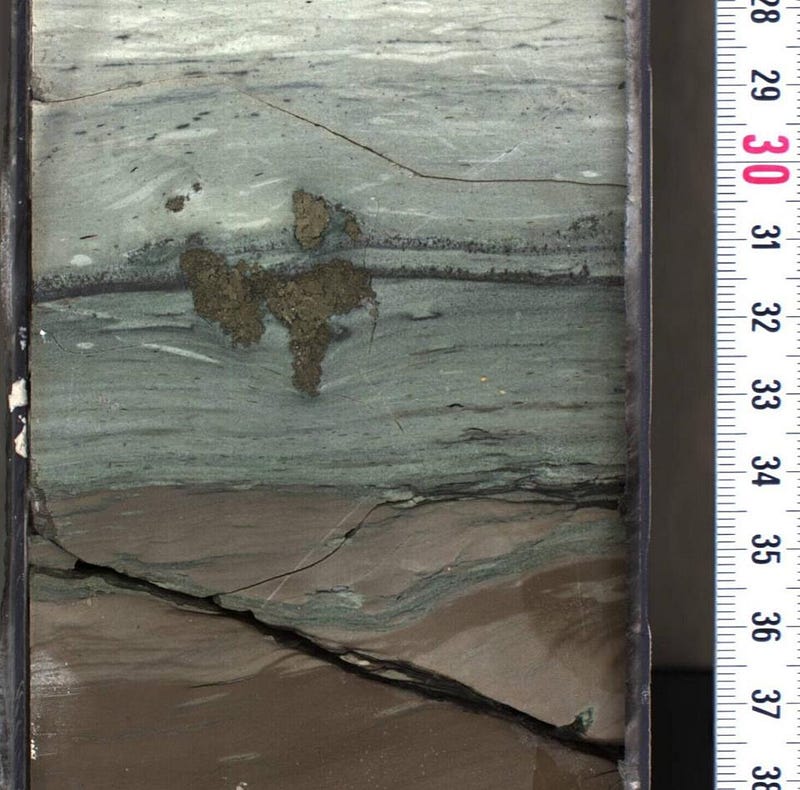
The most important thing is that we all learn what the correct scientific conclusion to draw is, and why. The impact event that occurred 66 million years ago was due to an asteroid, not an object with comet-like properties. We know this based on many reasons, including the very compelling chemical composition of the impactor, retrieved from Chicxulub crater and matched up with the layer of ash and clay found worldwide at the appropriate depth within sedimentary rock. A comet simply has the wrong properties, and the earlier study that claimed otherwise wasn’t just in error, but contained a series of unacceptably gross errors that should have resulted in the paper’s rejection.
The larger ethical issue, however, remains unresolved. What do we do about scientists who are so full of themselves that they willfully barge into a field they have no expertise in, and rather than work to gain that expertise and contribute meaningfully, they simply publish a superficial analysis to further their own fame and careers? This sort of practice must be discouraged, the same way we discourage those with no scientific expertise from contributing nonsense: through quality peer review. The alternative is to play an unwinnable game: scientific understanding by debate and public opinion. In the enterprise of science, it must always be facts and evidence, not persuaded minds, that carry the day.
Starts With A Bang is written by Ethan Siegel, Ph.D., author of Beyond The Galaxy, and Treknology: The Science of Star Trek from Tricorders to Warp Drive.





